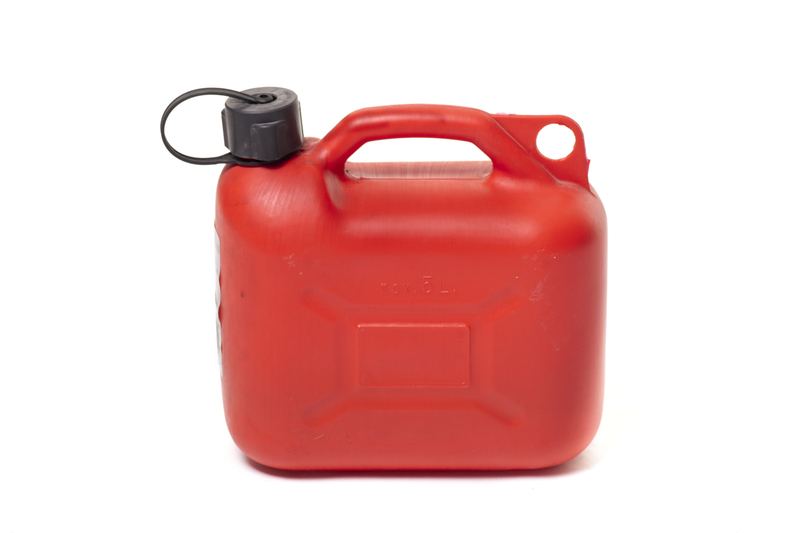Storing Your Freezer Safely While It's Not Active
Posted on 19/05/2025
Storing Your Freezer Safely While It's Not Active
Properly storing your freezer when it's not in use is essential for ensuring its longevity, keeping your home safe, and making certain it's ready to use again in the future. Many homeowners sometimes find themselves needing to unplug a deep freezer, chest freezer, or upright freezer temporarily. Whether you are moving, remodeling, or simply do not need the extra storage for a season, proper storage techniques will make a significant difference. In this comprehensive guide, we'll cover all aspects of safe freezer storage during inactivity, maintenance tips, best practices, and common mistakes to avoid.

Why Safe Storage of Inactive Freezers Matters
When a refrigerator-freezer or standalone freezer is not being used, it can be tempting to simply unplug it and forget. However, improperly stored freezers can lead to a host of issues including mold, odors, mechanical failures, pest infestations, and even health hazards. Understanding correct steps for storing your appliance during downtime is the best way to avoid costly repairs or replacements later on.
Main Risks of Improper Freezer Storage
- Mold & Mildew Growth: Moisture left inside can lead to fungus and unwanted smells.
- Pest Infestation: Food crumbs or residue attract rodents and insects.
- Rust & Corrosion: Unventilated interiors and moisture can lead to rust on shelves, hinges, or compressors.
- Mechanical Issues: Parts might seize up if the freezer is stored improperly for long periods.
Prepping Your Freezer for Storage
Prior to storing your freezer while it's not running, thorough preparation is crucial. Here's a step-by-step guide to ensure your appliance remains in pristine condition during its inactive period.
1. Remove All Contents
Before anything else, empty your freezer completely. Remove frozen foods, ice trays, baskets, or shelves. Leaving anything behind can cause spoilage, promote mold, and invite pests. Use coolers or insulated bags to temporarily store food while you clean.
2. Defrost Thoroughly
- Turn off and unplug the freezer at least 24 hours before cleaning to allow any ice buildup to melt.
- Place towels at the base to absorb melting water and prevent water damage to your floors.
- Prop the freezer lid or door open to expedite the thawing process.
Tip: Never use sharp tools to chip away at stubborn ice. This can damage the interior lining or cooling coils.
3. Clean and Disinfect the Interior
Once defrosted, it's time for a deep clean:
- Mix warm water and baking soda (1-2 tablespoons per quart) to gently clean all surfaces inside.
- For tough stains or odors, use a mixture of vinegar and water.
- Remove all shelves, bins, and drawers to wash individually for thorough grime removal.
- Completely dry every part with soft cloths or paper towels.
4. Clean the Exterior and Coils
Dirt and dust build up on the outside and the backside coils can impact the freezer's lifespan. Make sure you:
- Wipe the exterior with a mild detergent solution.
- Gently vacuum or dust compressor coils and the vent area (if accessible and safe to do so).
5. Ensure All Moisture is Gone
Leaving moisture inside is the fastest way to guarantee bad smells, mold, and hardware issues. After cleaning, leave the freezer door ajar for several hours--preferably overnight in a dry room. Some people place dry, crumpled paper towels or silica gel packs inside to absorb any residual humidity.
6. Deodorize and Freshen
- Once dry, place an open box of baking soda or a few activated charcoal briquettes inside to keep odors at bay during the storage period.
- Renew this every couple of months if storing long-term.
Best Practices for Safe Freezer Storage
With your freezer prepped, how and where you store it next matters. Take these steps to maximize safety and longevity:
Choose a Suitable Location
- Dry & Ventilated: Store the freezer in a well-ventilated, dry area to avoid condensation and dampness.
- Flat Surface: Place it on a flat, stable floor to prevent warping or accidental tip-overs.
- Avoid direct sunlight, hot appliances, or places subject to temperature extremes (like poorly insulated garages or sheds in summer/winter).
Keep the Door or Lid Propped Open
This is perhaps the most crucial step in safe freezer storage. Secure the freezer door slightly ajar using a door prop (commercial or DIY) to allow air circulation and prevent mold. Many find success by:
- Wedging a rolled towel or small foam block between the door and the body.
- Using special door spacers available online or at appliance stores.
Never seal the door tightly unless the freezer is actively running--sealed interiors quickly become mildew havens.
Protect Wiring and Plug
- Wrap and secure the power cord to avoid tripping hazards and prevent pests from chewing on it.
- If possible, keep the plug off the ground to avoid contact with potential moisture.
Optional: Cover Your Freezer
If placing your freezer in storage for a long time, a breathable appliance cover can keep dust off. However, avoid plastic wraps that trap humidity inside--use canvas or cotton covers instead.
Long-Term Freezer Storage Tips
Storing a freezer for months or even years? These extra precautionary measures will help you protect your investment when your appliance is out of commission for the long haul:
Check Periodically
- Inspect the interior and exterior every month or two for any signs of moisture, pests, or deterioration.
- Replace odor absorbers periodically.
Prevent Rust and Corrosion
In humid areas, place moisture absorbers or dehumidification packs inside and near the base. Check gaskets and hinges for any developing rust and treat them with a bit of appliance-safe lubricant if necessary.
Maintain Proper Airflow
- Do not stack items on top of your stored freezer, which could dent lids or affect door seals over time.
- Ensure several inches of clearance around the appliance to promote airflow and reduce trapped heat or humidity.
Safeguard from Pests
Place traps or repellents near your appliance if you suspect mice, rats, or bugs frequent the area. Double-check that no food or crumbs remain inside or underneath the freezer before long-term storage.
Recommissioning Your Freezer
If it's time to use your freezer again after a period of inactivity, follow these steps to ensure it's clean, operational, and safe:
- Remove all odor absorbers or moisture packs from the interior.
- Wipe interior with a damp cloth and allow to dry.
- Check for any signs of rodents or insects. Give extra attention to coils and the compressor area.
- Plug in the freezer and let it cool for at least 2-3 hours before adding any frozen food.
- Monitor for any unusual noises, leaks, or smells during the first 24 hours of operation.
Common Mistakes to Avoid When Storing Your Freezer Inactively
- Sealing the door completely shut -- leads to severe odor, moisture, and mold issues.
- Storing with food or ice residue inside -- always clear out and clean thoroughly to deter pests and mold.
- Allowing standing water to remain after defrosting -- heightens rust risk and damages flooring.
- Covering with airtight plastic sheets -- can trap moisture and accelerate mold or corrosion.
- Neglecting periodic checkups -- problems multiply if left unnoticed for months on end.

Frequently Asked Questions about Safe Freezer Storage While Inactive
Can a freezer be stored in a garage or shed?
Yes--but only if the space is temperature-controlled, dry, and not subject to extreme heat, cold, or humidity. Garages and sheds can be risky environments due to fluctuating conditions, so check your manufacturer's storage guidance before proceeding.
Should you leave the freezer plugged in while storing?
Never leave an empty, unused freezer plugged in unless specifically required. Not only is it a waste of energy, but unnecessary operation can wear out mechanical components.
What signs indicate a poorly stored freezer?
- Strong, musty odors on opening the door
- Presence of visible mold or mildew spots
- Rust patches around gaskets or hinges
- Evidence of pests inside or underneath
Conclusion: Keep Your Inactive Freezer Safe and Ready
Properly storing your freezer while not in use is an easy yet critical home maintenance practice. Whether it's a chest, upright, or specialty freezer, the same principles apply: clean thoroughly, defrost completely, keep the door propped open, and choose a suitable location. Adhere to these guidelines for safe freezer storage during downtime and your appliance will serve you well for years to come--odor-free, mechanically sound, and ready for your next big storage need. Remember, a little attention today will save you time, money, and hassle in the future!
If you found this guide on storing your freezer safely while it's not active helpful, consider sharing it with others who might benefit when preparing for moves, renovations, or even seasonal changes!
```


 Guide price for the hire of a Transit Van /up to 300 cu ft/.
Guide price for the hire of a Transit Van /up to 300 cu ft/.